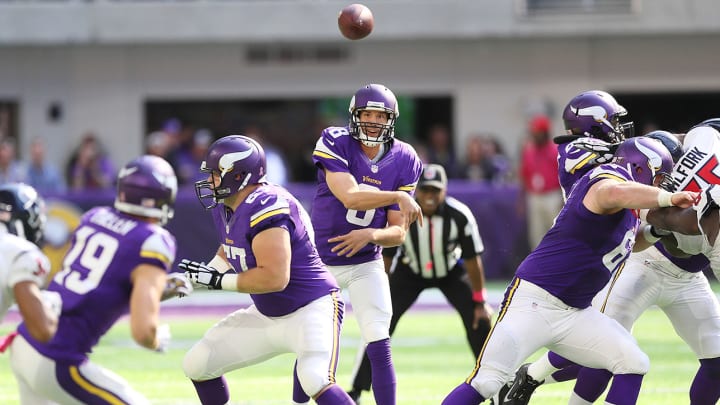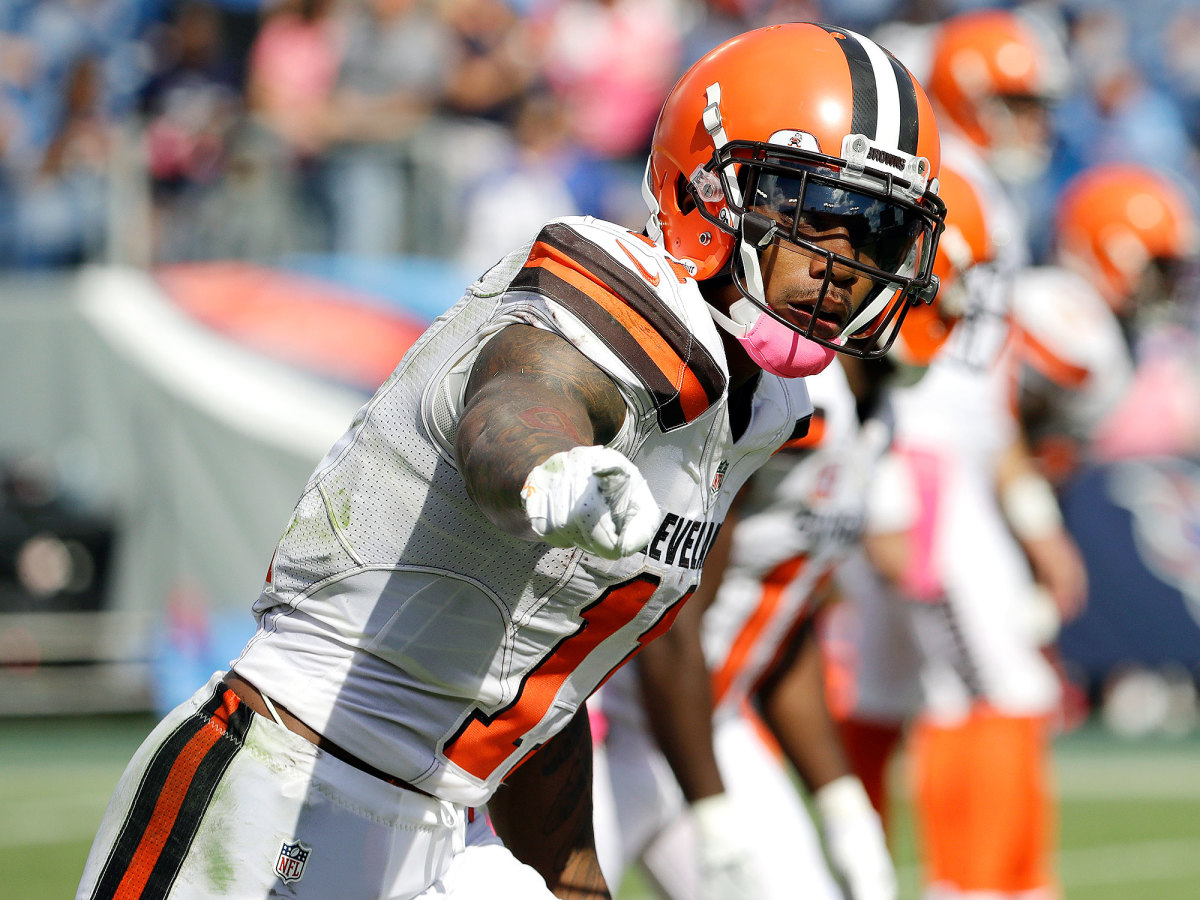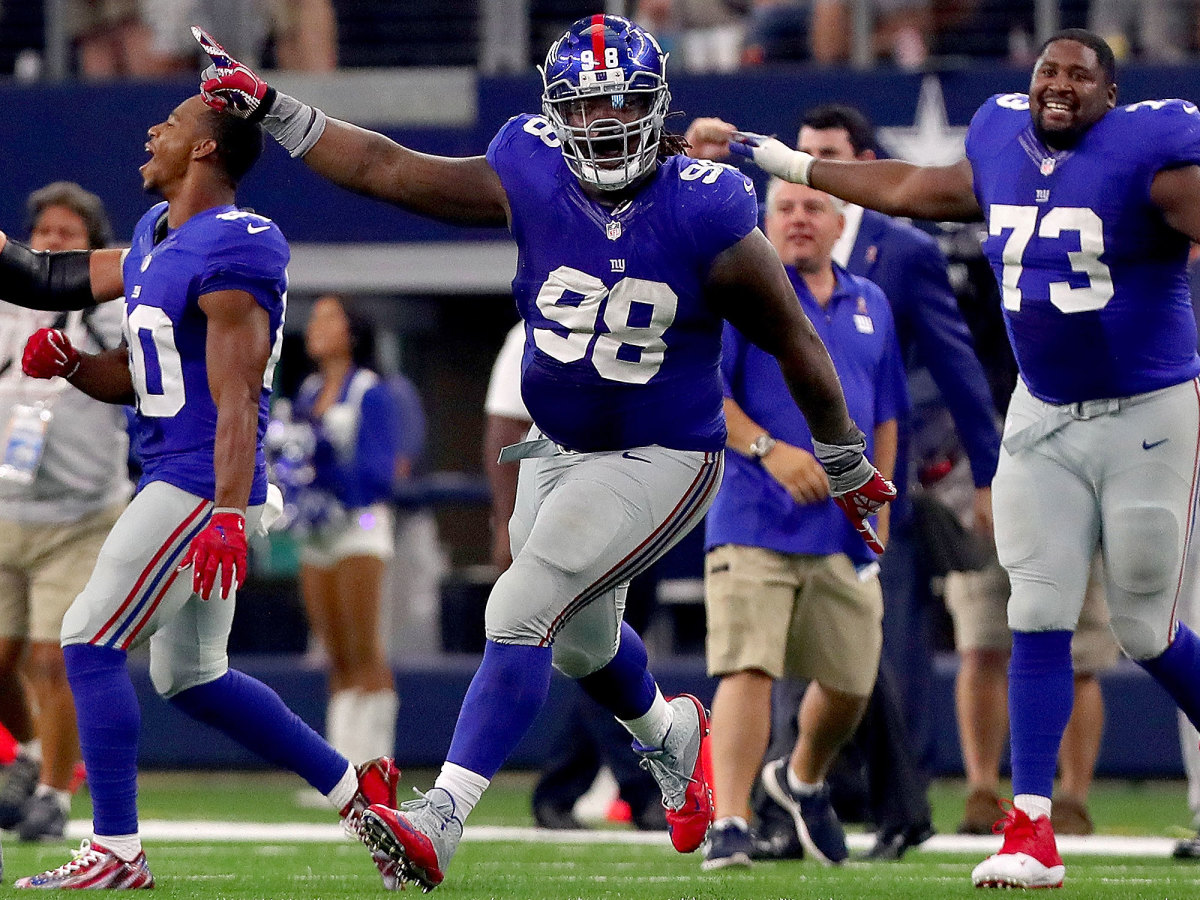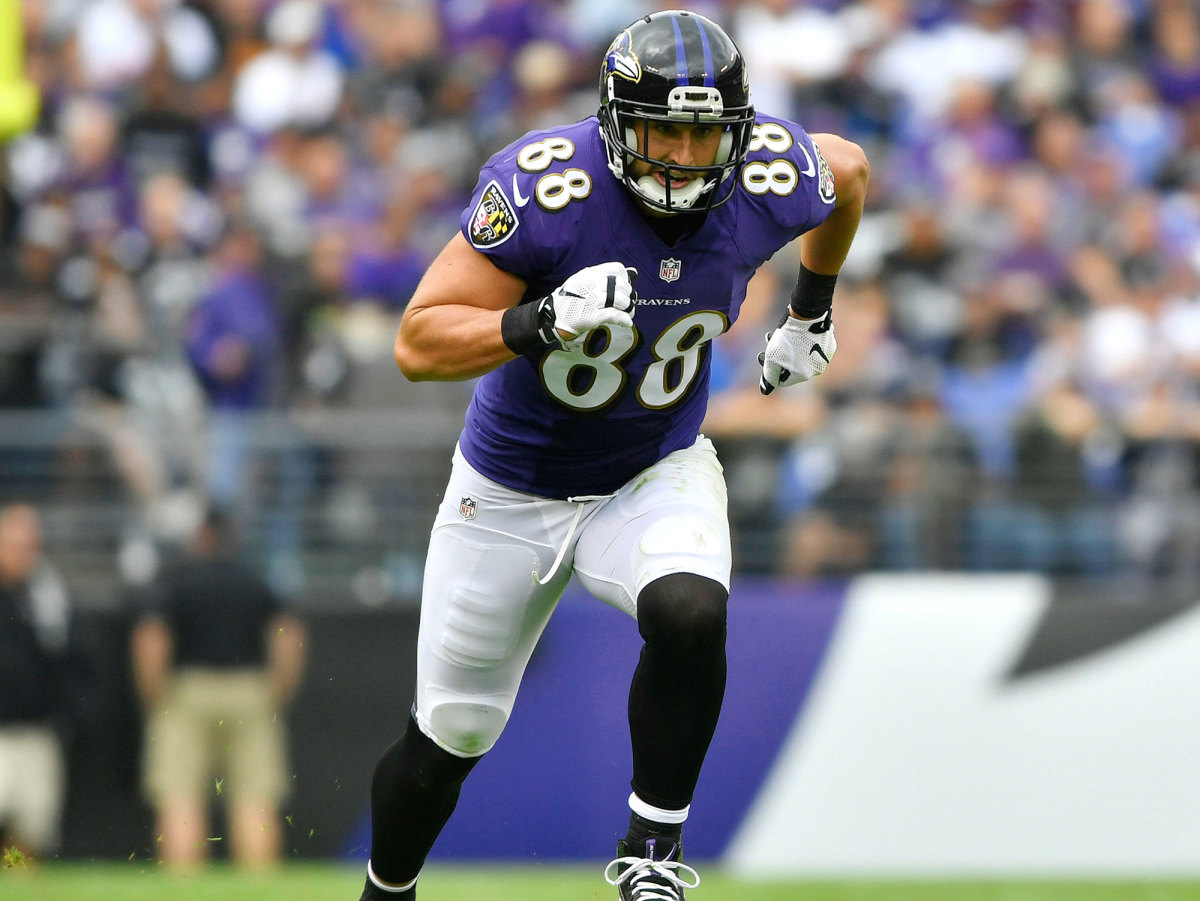Call it a comeback: The NFL's All-Lazarus Team owns 2016’s most compelling stories

The NFL doesn’t really break everyone—surely there’s been the odd kicking specialist who’s made it through a career unscathed. The rest, however, this league does tend to fold, spindle and mutilate.
Let us lift our glasses high, then, to the Lazari—the plural of Lazarus—who have endured extraordinary despair and bounced back to reclaim, resuscitate and otherwise resurrect their careers. Overlooked and underappreciated, counted out and cut, they are survivors of the injury list and the waiver wire, possessed of equal measures talent and resilience. They are also, it turns out, more common than you might realize.
Sam Bradford was dapper in a muted blue suit with a tasteful windowpane pattern. As he sat beside his locker, an hour after leading the Vikings to their fourth straight victory, on Oct. 3 against the Giants, his rising trouser cuffs revealed a fashion faux pas: Beneath his stylish tan oxfords, he wore no socks.
Bradford explained, “It’s the one superstition I’ve kept for my whole career”—a span stretching back to Putnam City North High and through his prolific career at Oklahoma. As the first pick in the 2010 NFL draft, by the Rams, he set a league record for most completions by a first-year quarterback and was named Offensive Rookie of the Year. Tall and smart, with an accurate arm, able to throw with touch and power, the kid radiated success. He had a glow about him ... until he didn’t.
After a season-ending ACL tear in 2013 and another in ’14, his name became synonymous with hard luck. He was traded to Chip Kelly’s Eagles and finished last season strong—but it was time, once again, for the other shoe to drop. Kelly was fired; Philadelphia moved up in the draft to snag Carson Wentz at No. 2. That vote of no-confidence provoked a rare fit of pique in the usually even-keeled Bradford, who announced he wanted a trade.
Helping Bradford come to peace with being stuck in Philly, sharing the position with the team’s QB of the future, was his Christian faith in general and a passage from the Book of James in particular. “Hang on, I’ve got it right here,” Bradford says, pulling out his phone and reading: Consider it pure joy, my brothers and sisters, whenever you face trials of many kinds. Because you know the testing of your faith produces perseverance. Let perseverance finish its work, so that you may be mature and complete, not lacking anything.
Perseverance, it turned out, had not finished its work. Neither had Eagles general manager Howie Roseman. Bradford had only been awake for a couple of minutes on the morning of Sept. 3 when he got a text from Philadelphia coach Doug Pederson: “We need to talk.”
“I figured he was calling to let me know they’d made a roster move,” Bradford says with a wry smile—“and sure enough, he was.” The Eagles had traded him to the Vikings (whose starter, Teddy Bridgewater, had torn his left ACL on Aug. 30) in exchange for two draft picks. That was at 8 a.m. Bradford and his wife, Emma, made it onto a 1:30 p.m. flight to Minneapolis. By 4 p.m., Bradford was at the Vikings’ Eden Prairie facility, learning his fourth offense in three years. The season opener was eight days away.
NFL Week 7 picks: Sam Bradford meets his former team as Vikings battle Eagles
While Bradford was familiar with the concepts in the system of his latest offensive coordinator, Norv Turner, the verbiage was new. It helped that the trade reunited Bradford with Shaun Hill, his backup for a season in St. Louis. If you think of a new offense “as a foreign language,” says Hill, “we have that common language that we spoke” as Rams. “So we can kind of relate.”
The Turners—Norv and his son, Scott, the Vikings’ QBs coach—also “code-worded” some of the more unwieldy, lengthy play names on their call sheet so that “one word equals a whole play,” says Scott. The downside of that shortcut: Everyone has to learn the code. “It puts a little more stress on the other guys.” But everyone in the huddle seems happy to do his part.
What we are learning this season is that, while Bradford may have never quarterbacked a team to the playoffs (or, for that matter, a winning season), this may have had less to do with his abilities than his supporting casts in St. Louis and Philadelphia. He is No. 1 in completion percentage (70.4%) and No. 2 in passer rating (109.8), and he’s one of just two qualifying QBs who haven’t thrown an interception. Pro Football Focus rates him as the No. 3 passer in the league. And this has been without the injured Adrian Peterson. No passer gets less from his backs (2.5 yards per carry) than Bradford does.
With go-to receiver Stefon Diggs out of the lineup with a groin injury in Week 5 against Houston, the imperturbable Bradford repeatedly found Adam Thielen. The onetime D-II walk-on finished with seven catches for 127 yards and a touchdown in a 31–13 spanking of the Texans, which left Minnesota as the league’s last unbeaten. Bradford has displayed a deep-ball accuracy that Bridgewater lacks, and he has, of late, defibrillated the career of kick returner/wideout/Lazarus Cordarrelle Patterson, a 2013 Pro Bowler.
The NFL's most anonymous star, Vikings S Harrison Smith prefers to fly under the radar
Despite taking numerous hard shots in his four starts—the Vikings lost both tackles to season-long injuries—Bradford “gets up every time,” says left guard Alex Boone. “He’s one of the toughest mother------s I’ve seen.”
He’s also “one of the most intelligent quarterbacks I’ve ever been around,” adds six-year veteran tight end Kyle Rudolph, still marveling at Bradford’s ability to lead the Vikings to a 17–14 win over the Packers after just two weeks with the team. Before he could locate his receivers in that game, Bradford first had to locate the team’s newly minted home, U.S. Bank Stadium. After eating his pregame meal with Hill in the team hotel, he had a question for his old friend. “Um, how do you get to the stadium?”
“Are you driving?” Hill asked him. Bradford was. “I’ll ride with you.”
With Bradford aboard, this team is poised for a long drive through the playoffs. Of course, not all comeback journeys point to the postseason—which isn’t to say they aren’t worth celebrating.

It was June 2015, Tim Cortazzo recalls, a pleasant morning in western Pennsylvania. A former receiver at Toledo, the personal trainer was working with members of the Penn-Trafford High football team when a familiar, rangy figure approached the field.
“Terrelle Pryor walks over and says, ‘What’s up?’ and we start talking,” says Cortazzo. It had been eight years since Pryor’s last game at QB at nearby Jeannette High, where he was the 2007 Parade National Player of the Year. After three seasons at Ohio State and three with the Raiders, he’d been signed and cut by the Seahawks, Chiefs and Bengals. By the time Pryor walked onto the field at Penn-Trafford that day, he’d arrived at a momentous and difficult decision. “I think I’m gonna try and switch positions,” he told Cortazzo, who runs FSQ Sports Training in Trafford. “I know you played receiver. Can you help me out?”
He and Pryor did drills for 30 minutes or so, until Cortazzo had to stop. He had a class to teach. Before leaving, Pryor asked him, “What are you doing tomorrow?”
They got busy. Freakish athletic ability aside, the 6' 4", 223-pound Pryor was a project at his new position. “He was big, strong and fast,” says Cortazzo, but also “robotic” and “super raw.” He needed to work on everything: his hands, his releases, sinking his hips going into breaks, keeping his feet moving coming out of them. A week or two after starting with Cortazzo, Pryor signed with the Browns. “At that point, he became obsessed with [playing receiver] and started grinding.”
To buoy his business, Cortazzo would post occasional videos on social media, dispatches from Pryor’s quest. Not all the feedback was gracious. “I got comments like, ’He’s got no chance,’” says Cortazzo. At one point a discouraged Pryor told his trainer, “Man, there’s not one person in this country who thinks I can do this.” Sharing that opinion, apparently, was then Browns GM Ray Farmer, who cut Pryor on Sept. 10—five days after he’d been informed he made the final roster. “I had some low moments,” Pryor says. “I don’t mean to sound arrogant, but there were [QBs] on the teams I’ve been released from who weren’t better than me. That’s when I realized: This is political; I just didn’t fit in with what [personnel people] were looking for in a QB. It was time to try something else.” Says Cortazzo, “He was back here training with us the day after he was cut.”
Reckless rookie: Inside Brett Favre's strange season with the misfit Atlanta Falcons
The Browns ultimately re-signed Pryor last December, but the fact that they drafted four receivers last spring suggests they weren’t exactly banking on him. Pryor used that as inspiration. He complemented his FSQ training with two weeks in Charlotte, where he worked with future Hall of Fame receiver Randy Moss. And in August, Pryor was the talk of Cleveland’s training camp. Following his second score (a 75-yard bomb from Josh McCown) during Cleveland’s intrasquad scrimmage at the Horseshoe in Columbus, the erstwhile Jeannette Jet turned to the cheering crowd and semaphored O-H-I-O.
The question, it turns out, is not whether Pryor can cut it as an NFL wideout. The question is, How soon will he make his first Pro Bowl? After logging three catches apiece in his first two games, Pryor hauled in eight balls for 144 yards in Week 3, against the Dolphins. That breakout as a receiver came on a day—irony alert—the Browns also called on him to play nine snaps at QB, where he went 3 of 5 for 35 yards rotating in with third-stringer Cody Kessler. Pryor also carried four times for 21 yards and a touchdown, and was, according to the graders at Pro Football Focus, the best Brown on the field.
Six weeks into what is shaping up to be another Stephen King kind of season in Cleveland, Pryor is the lone beam of sunlight. His team-leading 33 grabs for 413 yards and three TDs (and the fact that he’s PFF’s No. 9 pass catcher) are more impressive considering that more than half of those passes have come from the team’s third- and fourth-string passers. Meanwhile, Pryor remains a de facto QB5; he took five snaps at the position in Week 5, rotating in with Charlie Whitehurst.
As the praise pours in, Pryor plugs his ears, repeating his mantra that he’s just “scratched the surface” of his abilities, that he’s not satisfied with eight catches for 144 yards—“I want 15 for 270. I want to break records.” Then, following a forlorn pause, he adds, “I want to see the Browns win every game.”
In reality, Cleveland will be fortunate to win even four games this season. Meanwhile, Pryor heeds the counsel of Moss, who weighs in weekly with advice on how to attack certain corners and who reminds him, “Tunnel vision.” As long as Pryor continues to instruct scout team DBs to rough him up and catches upwards of 800 balls a week, results will come. As will a dramatic pay raise after the season when he becomes a free agent.
It’s tough to begrudge a man his good fortune after he’s worked so hard to prove so many people wrong.

It seems fitting that in the months before Damon Harrison resurrected his football career, he worked the graveyard shift. During his first night restocking merchandise at a Walmart in Lake Charles, La., he was warned by his fellow workers: Don’t sit on the floor if you’re stocking the bottom shelves. “Of course, the first night I was there, I sat on the floor,” says Harrison, now a 6' 4", 350-pound nosetackle for the Giants, “and I ended up falling asleep in the middle of the aisle.”
Forgiven his rookie mistake, he went on to flourish at Walmart, and his managers eventually offered him a full-time gig. If they’d called five minutes earlier, Harrison says, “I would’ve taken that job. That was gonna be some pretty good money.” But he’d already spoken that morning to Steven Miller, the defensive line coach at William Penn, an NAIA school in Oskaloosa, Iowa. Miller had offered him a scholarship, and Harrison accepted. If Miller had called any later, the NFL would’ve been deprived of both an elite run stuffer and one of the more sublime nicknames in sports.
Damon (Snacks) Harrison and football did not get along at first. He was cut in middle school. Twice. When he went out for the freshman team at Lake Charles–Boston High, a coach asked him what position he played. The 6' 0", 200-pound newcomer explained that he liked to run the ball. So the coach put him at running back. “After that practice, man, I was hurting real, real bad,” he recalls. “And then I had to walk home.”
During that stroll he decided he was a basketball player. Harrison loved hoops and played four years in high school. “I don’t want to brag on myself,” he says, as a preamble to bragging on himself, “but I could shoot the rock, man.”
Blanket Coverage: NFL head coaching on a sharp downward trajectory
When a torn left meniscus forced him to the sofa for a month during his junior season, Harrison put on “30 or 40 pounds,” he says. Inspecting his new and more ursine physique, he decided to give football another go as a senior. In preseason workouts, coaches doubted he’d stick it out. “I don’t know why you’re coming out here,” one goaded him. “You’re not gonna be on this team.” He made it as the backup right tackle. When the starter got hurt, Harrison took his job and never gave it back. He began playing on the D-line, too, and was named to the all-Southwest Louisiana team. Still, he generated not a scintilla of interest from any college. Two weeks before graduating, he sent a series of hard-sell emails to a dozen coaches. Because his family had no computer, he sent them from the school library.
Two coaches replied. One was Miller, then an assistant at Northwest Mississippi Community College. After taking a look at Harrison’s film, Miller offered him a scholarship. But when Harrison arrived in Senatobia, Miss., the team waffled. Harrison had never spent time in a weight room, which quickly became obvious. “You had the linemen doing sets on the bench with 225 pounds. I was over with the quarterbacks, doing sets with 135. And I could only do that about five times.”
The Rangers were only allowed eight out-of-state players and—surprise!—they were overbooked. Harrison would have to “grayshirt”—not play until the following season. Instead, he put Senatobia in his rearview mirror. Back in Lake Charles, he landed at Walmart and counted himself lucky. He would stock shelves in the pets section until 3 a.m., take his “lunch” break and decamp to cosmetics.
Then Miller was hired at William Penn, and he invited Harrison to join him. The coach even drove Harrison to Iowa in his Jeep Cherokee (though right up until the eve of that interminable journey, Harrison thought they were headed to Williamsburg, Va., home of the College of William & Mary). For four seasons, Harrison started every game at D-tackle for the Statesmen. As a senior, in 2012, he got a last-minute invite to a B-list all-star game in Arkansas and made a handful of tackles. A draft guru taking notes that day later wrote of him—Harrison can recite this passage from memory—“Too slow and heavy-legged to ever compete at the NFL level. At best a camp body.” Befitting an athlete whose lower body can now be fairly described as pachydermal, Harrison has the memory of an elephant.
On the third day of the draft, the day he was most likely to be selected, Harrison and some friends filled a booth at a Buffalo Wild Wings in Des Moines. Plenty of scouts and coaches had told him that they had their eye on him, but when the seventh round ended, his name hadn’t been called. Sitting in the back of a van on the drive home, Harrison turned off his phone and shed what he describes—a bit angrily—as “angry tears. It had happened again. I was being told I was not good enough. Again.”
The U.K. is fired up for Odell Beckham Jr., the face of NFL's international growth
When he turned his phone back on, Harrison’s agent told him he was going to the Jets as an undrafted free agent. To manage his expectations, he was warned that New York had just re-signed one nosetackle and had drafted another in 2011. He would probably be fighting for a spot on the practice squad.
“I hate it when someone tells me what I can and cannot do,” says Harrison, whose stout play in training camp forced the Jets to keep three nosetackles that fall. A year later he was starting. After last season, PFF rated him the NFL’s second-best nosetackle and the single best defender against the run. Last March he signed a five-year, $46.5 million deal ($24 million guaranteed) with the Giants, whose defense has gone from allowing 4.4 yards per carry in 2015 (24th in the NFL) to 3.5 (sixth) in ’16.
Had Miller not called in the nick of time, Harrison would have had to work 930 years at Walmart, making $50,000 annually, to equal that contract. Even elephants don’t live that long.

Dennis Pitta remembered. He knew, as he was being carted off the field in Cleveland on Sept. 14, 2014, that he’d dislocated his right hip, just as he’d dislocated it 14 months earlier, in training camp. He knew team doctors would now attempt to pop the head of his femur back into its socket, as they had on the practice field in Owings Mills, Md. This time, he recalls, they waited until the medic cart was “just inside the tunnel,” so the crowd wouldn’t see them manhandling the leg.
“I don’t think I’ve experienced anything more painful,” says the seventh-year tight end. To hear him expound on hip anatomy, on his two surgeries and on the perils of avascular necrosis, which afflicted Bo Jackson but not Pitta, is to realize that his self-description as a “hip specialist” on his Twitter bio is not entirely in jest.
After he’d dislocated the same hip twice in just over a year, doctors told him he was done with football. Pitta agreed. Or at least he pretended to agree while he rehabbed from the second injury. “Based on what everybody was telling me,” he says, “I had very little hope of returning.”
You couldn’t blame the Ravens for writing him off. Which they did. Baltimore drafted two tight ends in 2015, then added another, free agent Ben Watson, last March. Pitta, for all anyone knew, was rehabbing “to be able to run around and play with my kids and feel normal.”
Yet there he was on the practice field last October, catching passes from Joe Flacco. “I was running well and cutting well,” he recalls, “but I didn’t quite feel 100%.” Pitta was shut down for the rest of the season.
And then there he was, reporting to training camp in July. And there he was on Sept. 18, back in Cleveland, 728 days after that cart ride. This time, after catching nine passes for 102 yards in a 25–20 Ravens win, he walked off the field. Four weeks later, his 34 catches are second most among NFL tight ends. He’s on pace for 91 grabs, which would smash his career high of 61 in 2012.
Like his fellow Lazari, Pitta had made it all the way back. Perseverance had finished its work.
